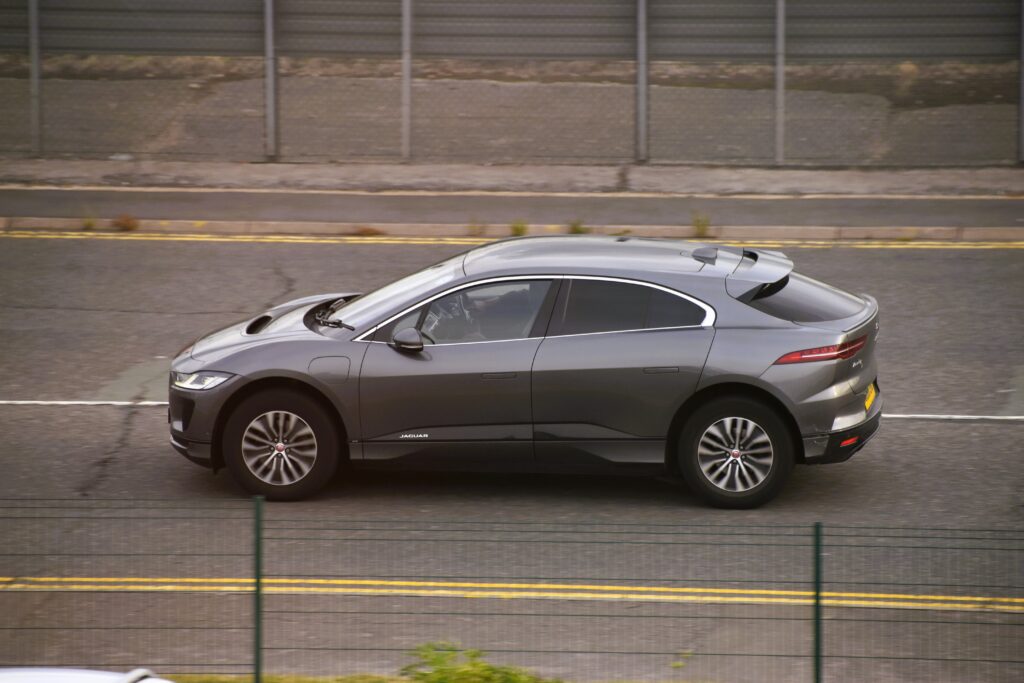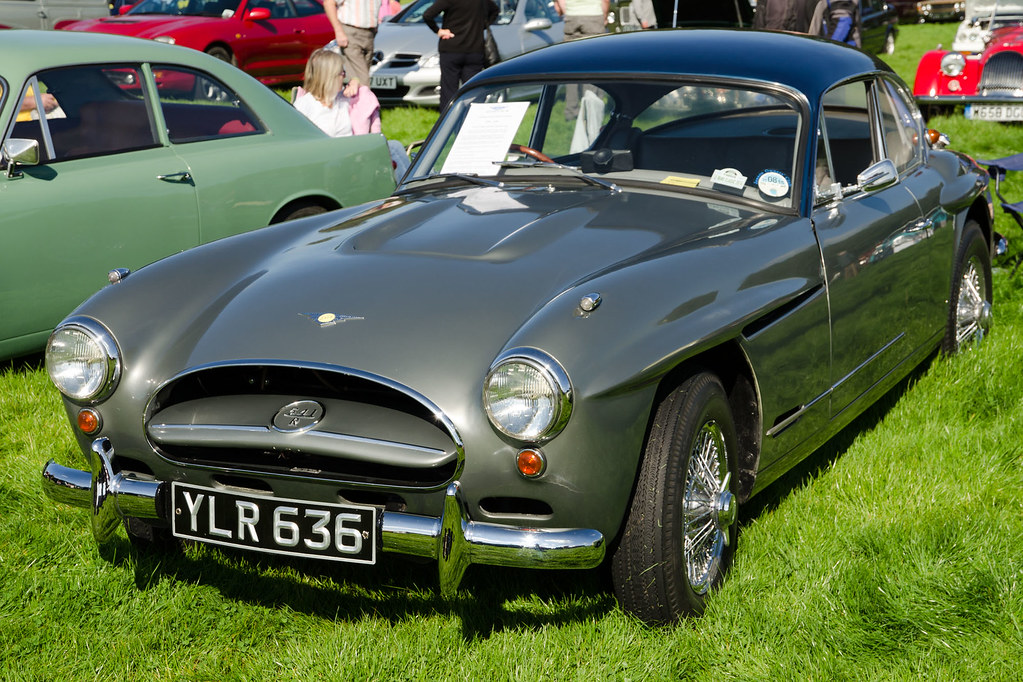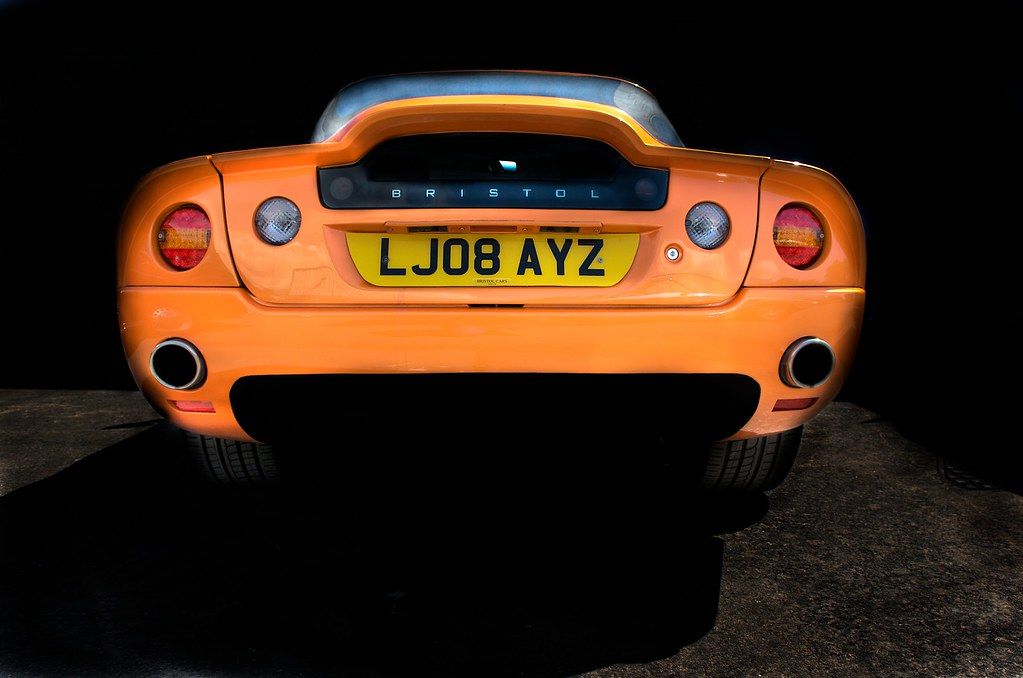
Mick Fleetwood, the towering drummer and a co-founder of the legendary Fleetwood Mac, is a figure synonymous with rock and roll history. While the tales of his band’s triumphs and tribulations, including the colossal success of “Rumours” — one of the bestselling albums of all time with 45 million copies and counting — are well-known, there’s another facet of his life that speaks volumes about his discerning taste and enduring passions. Beyond the stage and the studio, Fleetwood harbors a deep, abiding affection for automobiles, an “addiction I can be thankful for,” he candidly told Rolling Stone, offering a glimpse into the sophisticated world of a true connoisseur.
Indeed, for a man whose life has been as full of dramatic highs and lows as his music, including financial struggles that saw him admit, “I’m like Donald Trump… I’ve lost count of how many times I’ve been bankrupt,” his commitment to his four-wheeled friends has remained unwavering. He once reflected, “I’ve had cars that I probably should have unloaded a long time ago, but I just can’t,” expressing a sentiment that resonates deeply with any true car enthusiast. It’s this profound connection, this understanding of a vehicle not merely as transport but as a piece of art and history, that sets Fleetwood’s collection apart.
Unlike many superstars who chase after the latest high-end luxuries or powerful hypercar models, Fleetwood’s tastes lean towards classic British motorcars, a testament to his upbringing and a refined sensibility that prioritizes character over ostentation. His collection is a curated journey through automotive excellence, each vehicle telling a story, reflecting a moment, and showcasing an eye for quality that is truly aspirational. Join us as we explore the first three remarkable machines that have graced his garage, each a jewel in a collection that proves Mick Fleetwood has, without a doubt, great taste.

1. **The 1933 Austin Seven: “Lettuce Leaf” – A Humble Beginning, A Lifelong Companion**The story of Mick Fleetwood’s 1933 Austin Seven is not just about a car; it’s a touching narrative of aspiration, patience, and enduring affection. This diminutive British classic, often affectionately known as the “Baby Austin” and considered the British equivalent of a Model T Ford, captured Fleetwood’s heart long before the mega-stardom of Fleetwood Mac. He first spotted it parked on a London street as a struggling, flat broke 20-year-old musician, an encounter that sparked an immediate and undeniable infatuation. So profound was his desire that he “wrote a note and left it on the little car’s windscreen, saying: ‘I’m in love with your car. If it ever needs a good home please call me.’” This act, born out of pure passion, speaks volumes about his inherent connection to these machines.
Two years later, serendipity intervened, and with just enough money to fulfill his dream, Fleetwood purchased the Austin Seven, right as Fleetwood Mac was beginning to form. He lovingly named it “Lettuce Leaf” due to its distinctive green exterior, a name that has stuck with the car through its remarkable journey. This isn’t merely a vehicle; it’s a tangible link to his nascent career, a symbol of his humble beginnings, and a silent witness to his ascent in the music world. Its presence in his life for over 50 years underscores its irreplaceable sentimental value, transcending its monetary worth.
Technically, the Austin Seven was a marvel of its time, a small vehicle that, as Fleetwood noted, “looks more at home on beachside roads than busy London streets.” Powered by a modest 747cc engine with eight valves, it produced a humble yet functional 24 brake horsepower. Equipped with a four-speed manual transmission, it was remarkably efficient, achieving 35 to 40 miles per gallon. For a modern collector, the Austin Seven holds particular appeal not only for its historical significance but also for its practicality: it is “in no short supply of replacement parts,” making it an excellent option for those looking to maintain a vintage and extraordinary piece of automotive history. An example of a blue 1933 Austin Seven sold at a U.K. auction house in 2019 for £7,995, approximately $9,600, highlighting its enduring value.
The car’s journey with Fleetwood has been as storied as his career. In 1974, when he moved to the United States, he entrusted “Lettuce Leaf” to his then-brother-in-law, Eric Clapton. Fourteen years later, a call from Clapton’s manager revealed the car had been “dumped… in his orchard,” and the legendary guitarist wanted to get rid of it. Fleetwood promptly reclaimed his beloved Austin, embarking on a complete restoration. Today, he still takes it for a spin from time to time in Maui, where he resides, a tangible connection to his past and a testament to his “big, big love for that little car.”

2. **The 1950 Jaguar XK-120 Roadster: Elegance and a Remarkable Bargain**For many aficionados of a certain age, the Jaguar XK-120 Roadster represents the quintessential post-war sports car, the machine that ignited a passion for speed and exquisite design. It’s a true work of art, a testament to British automotive craftsmanship, with its “classic rounded lines and elegant stylings” that have become standard among Jaguar’s iconic models. This is precisely the kind of vehicle that would captivate a man of Mick Fleetwood’s refined sensibilities, blending performance with an undeniable aesthetic appeal that speaks to an aspirational lifestyle.
Fleetwood’s acquisition of his 1950 Jaguar XK-120 is another story of remarkable fortune and a keen eye for potential. He purchased his for “about £60,” a sum that seems almost unbelievable given the car’s original price tag of £1,200 (around $1,450 at the time) for a new model. However, as Fleetwood himself admitted, his find was “a wreck, leaked as much oil as it used petrol.” Demonstrating his characteristic resourcefulness and dedication, he also noted, “I couldn’t afford to buy the hard-top roof for the winter, so rain or shine, mostly rain, I drove it with no top at all.” This anecdote perfectly encapsulates his hands-on approach and deep-seated appreciation for restoring these automotive treasures to their former glory, rather than simply buying them off the showroom floor.
The Jaguar XK-120 was initially conceived as a rather audacious publicity stunt. Jaguar had planned to produce just 200 of these vehicles, primarily to showcase the then-innovative XK engine destined for the forthcoming Mk VII saloon. However, the car’s unveiling at the 1948 British Motor Show in London’s Earl’s Court created an instant sensation, effectively “stealing the show.” Its undeniable allure and impressive capabilities quickly turned a limited-run publicity vehicle into a production phenomenon, cementing its place in automotive history and making it a coveted item for collectors.
Underneath its sleek bonnet, the XK-120 housed a potent 3.4-liter six-cylinder engine, featuring twin overhead camshafts and twin SU carburetors. This engineering marvel produced an impressive 160 brake horsepower, allowing the car to accelerate from 0 to 60 miles per hour in less than 10 seconds. More impressively, it could reach top speeds exceeding 120 miles per hour, an extraordinary feat for its era. Today, pristine original 1950s models command prices around $120,000 at auction, making Fleetwood’s initial bargain acquisition truly something to behold and a testament to his early acumen in spotting value.
Car Model Information: 1954 Jaguar XK 120
Name: Jaguar XK
Manufacturer: Jaguar Cars
Production: 1949–1992
Successor: Jaguar AJ6 engine
Categories: All Wikipedia articles written in British English, All articles with unsourced statements, Articles with short description, Articles with unsourced statements from June 2018, Articles with unsourced statements from October 2019
Summary: The Jaguar XK is an inline 6-cylinder dual overhead camshaft (DOHC) engine produced by Jaguar Cars between 1949 and 1992. Introduced as a 3.4-litre, it earned fame on both the road and track, being produced in five hemispherical head displacements between 2.4 and 4.2-litres for Jaguar passenger cars, with other sizes being made by Jaguar and privateers for racing. A de-rated version was also used in certain military vehicles built by Alvis and Daimler.
Get more information about: Jaguar XK engine
Buying a high-performing used car >>>
Brand: Jaguar Model: XK-120
Price: $32,500 Mileage: 0 mi.

3. **The 1955 MG TF: A Roadster’s Swan Song with Enduring Appeal**Mick Fleetwood’s discernible preference for vintage autos is beautifully exemplified by his ownership of a 1955 MG TF. This particular model represents a fascinating chapter in British automotive history, serving as a “last-gasp effort to enhance MG’s long-favorite T-series models before releasing the new MGA vehicle.” It’s a car that carries the weight of a legacy, offering a bridge between the classic post-war designs and the innovations of the approaching modern era, making it an intellectually appealing choice for a discerning collector.
The MG TF, like its T-series predecessors, held a special place in the hearts of returning veterans of World War II. Much in the same way American servicemen developed a taste for British cars during their time in the U.K. and sought out powerful roadsters upon their return, so too did British servicemembers. These cars symbolized freedom, excitement, and a new era of open-road adventures, making them highly sought after by a generation yearning for spirited driving experiences after years of conflict. This cultural resonance adds another layer of appreciation to Fleetwood’s choice, linking his personal taste to a broader historical context of aspiration and liberty.
Production of the TF was notably brief, running only for a few years, from 1953 to 1955, with a limited total of just 9,602 units ever created. The 1955 lineup, specifically chosen by Fleetwood, further refined the model, boosting its power output with a larger engine than the earlier 1250cc installation. This particular year saw even fewer cars produced, with only 3,400 units contributing to its rarity and desirability among collectors. The scarcity of these vehicles today only enhances their allure, solidifying the MG TF as a serious collector’s item in the vintage car market.
Powering the MG TF was a 1466cc inline-four engine, a robust and reliable powerplant that produced 63 brake horsepower, allowing the car to reach a respectable top speed of 88 miles per hour. Aesthetically, the car is a quintessential classic convertible roadster, characterized by its “squared features and an elongated front end.” Its design language is immediately recognizable, evoking a sense of nostalgic charm while hinting at the sporting prowess that made MGs so popular. For Fleetwood, owning such a vehicle is not just about its mechanics, but about embracing a piece of history that continues to captivate and inspire, showcasing an individual who truly understands the essence of automotive beauty and heritage.
We’ve journeyed through the formative years of Mick Fleetwood’s automotive passions, exploring the sentimental origins and unique histories of his first three cherished British classics. Now, let us turn the page to the next chapter of his impeccably curated collection, where sophisticated engineering meets an undeniable allure, highlighting the rarity and cultural significance of the remaining vehicles. These machines are not merely conveyances; they are profound statements of a lifelong appreciation for automotive artistry, each one a testament to Fleetwood’s unwavering and truly aspirational taste.
Car Model Information: 1955 MG TF
Name: MG F / MG TF
Caption: 2000 MG F
Production: 1995–2011
Manufacturer: Rover Group
Class: Roadster (automobile)
BodyStyle: convertible (car)
Layout: Rear mid-engine, rear-wheel-drive layout
Predecessor: MG MGB
Successor: MG Cyberster
Sp: uk
Categories: 2000s cars, 2010s cars, All articles needing additional references, All articles with dead external links, All articles with unsourced statements
Summary: The MG F and MG TF are mid-engined, rear wheel drive roadster cars that were sold under the MG marque by three manufacturers between 1995 and 2011.
The MG F was the first new model designed as an MG since the MGB that was produced from 1962 to 1980, the marque spent the 1980s being used to denote performance models from then-parent Austin Rover Group, and was briefly seen on the MG RV8, a limited edition relaunch of the MG MGB which was sold between 1993 and 1995.
The MG F was initially designed by Rover Group during the period it was owned by British Aerospace and was brought to market after the business had been sold to the German car manufacturer BMW. BMW owned Rover Group and manufactured the model from 1995 to 2000. BMW broke up Rover Group in 2000, divesting the Rover and MG passenger car businesses to a management buy-out who formed the independent MG Rover business. MG Rover manufactured the MG F from 2000 onwards, heavily updating it to become the MG TF in 2002.
MG Rover entered administration in 2005, resulting in the production of the MG TF model ceasing. Some of the assets of the MG Rover business were sold to Nanjing Automobile and the MG TF resumed production under the Nanjing-owned MG Motor in 2007. The model, by then heavily outdated, was not a sales success and production ceased for a second and final time in 2011.
Get more information about: MG F / MG TF
Buying a high-performing used car >>>
Brand: MG Model: TF
Price: $21,000 Mileage: 66,442 mi.

4. **The 1964 Jensen C-V8 Mk II: A British Bruiser with a Featherlight Touch**Mick Fleetwood’s discerning appreciation for classic British motorcars extends far beyond the most obvious marques, drawing him to lesser-known, yet incredibly significant, creations from the UK’s rich automotive heritage. Among these stands the formidable 1964 Jensen C-V8 Mk II, a vehicle that, while perhaps not a household name in every corner of the globe, holds an undeniable allure for those who truly understand the nuanced world of classic British motoring. Its esteemed presence in Fleetwood’s garage speaks volumes about his sophisticated taste, placing him in the distinguished company of fellow drumming legends like John Bonham and Ginger Baker, both of whom recognized the C-V8’s exceptional, almost cult-like qualities. This isn’t just a car; it’s a profound statement of belonging to an exclusive club of connoisseurs who value substance and unique engineering over mere badge prestige.
The Jensen C-V8 Mk II was a true marvel of mid-century British engineering, a brute in a Savile Row suit. Fleetwood’s specific Mark II model was a veritable powerhouse, boasting a formidable 6.3-liter V8 engine that unleashed an impressive 330 brake horsepower, a figure that commanded respect on any road. This represented a significant leap from the earlier Mk I’s 5.9-liter V8, showcasing Jensen’s unwavering commitment to pushing performance boundaries and delivering an exhilarating drive. Expertly coupled with a robust automatic 3-speed gearbox, this substantial power was flawlessly channeled through a rear-wheel-drive setup, promising a thrilling and deeply engaging experience for any enthusiast fortunate enough to be behind the wheel.
What truly set the Jensen C-V8 apart was its remarkably innovative use of a fiberglass body. In an era dominated by heavy, traditional steel shells, Jensen made a bold and audacious choice, meticulously crafting the car’s body from this lightweight composite material. This ingenious engineering decision dramatically minimized the vehicle’s overall weight, a crucial factor in enhancing its performance, handling dynamics, and outright speed. The harmonious synergy between the featherlight fiberglass body and the monstrous engine beneath the hood meant that a Jensen C-V8 owner wasn’t merely driving a car; they were commanding a precision-engineered machine capable of rocketing to top speed in mere seconds, a sensation that would undoubtedly appeal to someone like Fleetwood, who appreciates both raw power and groundbreaking, unconventional design.
However, such an avant-garde approach often meant limited production runs, a characteristic that only adds to the C-V8 Mk II’s rarity and profound desirability today. Like many of the meticulously collected vehicles in Fleetwood’s possession, the Mark II variant was produced for only a fleeting period, specifically spanning just two years between 1963 and 1964. This brief, exclusive production cycle, emblematic of many specialist British manufacturers striving for innovation, solidifies its status as a serious collector’s item. It embodies a distinct blend of luxury, performance, and historical significance that perfectly aligns with Fleetwood’s aspirational and discerning automotive philosophy, marking it as a truly iconic, yet underappreciated, classic.

5. **The 1966 Ferrari 275 GTB: A Maranello Masterpiece in a Rock Star’s Pantheon**While Mick Fleetwood’s collection largely champions the understated elegance and robust engineering of classic British motors, his appreciation for automotive excellence clearly transcends national borders, embracing the pinnacle of Italian artistry. No true connoisseur’s garage, after all, would feel truly complete without a touch of Maranello’s legendary flair, and Fleetwood’s astute choice, a stunning 1966 Ferrari 275 GTB, perfectly encapsulates this global sensibility. This isn’t just any Ferrari; it’s unequivocally one of the most stylish and iconic vintage models ever to grace the roads, a timeless masterpiece of design and engineering that has captivated discerning individuals across the world, from media magnates to business titans, including personalities like Nicholas Cage, who famously acquired a 275 GTB in 2007, solidifying its status as a coveted possession among the elite.
Fleetwood’s own acquisition of this automotive gem in 1977 further illustrates his profound and deeply personal connection to these machines, viewing them as more than just objects. He held onto this dream car for five cherished years, a period that speaks volumes about its significant place in his heart and his life, before making the truly difficult decision to sell it in 1982. This divestment wasn’t due to a waning affection for the car itself, but rather a pragmatic, albeit painful, strategic move to convert many of his worldly assets into a sprawling 1,000-acre farm in Australia – a poignant reminder of the complex financial realities and personal sacrifices that even legendary rock icons sometimes face in their grand narratives. Despite its eventual departure, the profound impact the car had on him was undeniable, as he eloquently remarked, “I just thought the look of the car was extraordinary,” a sentiment that resonates deeply with anyone who has ever fallen under the irresistible spell of Ferrari’s iconic design language and unparalleled presence.
The throbbing heart of the 1966 Ferrari 275 GTB was its potent V12 engine, a symphonic marvel of engineering that delivered not just raw power, but an utterly exhilarating and immersive driving experience. With a total displacement of 3,285.72 cubic centimeters, this formidable powerhouse produced an impressive 200 horsepower, meticulously channeled through a precise and engaging 5-speed manual transmission. This exquisite configuration wasn’t solely about brute force; it was fundamentally about the purest art of driving, offering a visceral, almost telepathic, connection between man and machine that defined a generation of sports cars. Such formidable specifications positioned the 275 GTB as one of the fastest and most desirable cars of its era, capable of effortlessly reaching a breathtaking top speed of 166 miles per hour, an astounding and almost mythical figure for the mid-1960s.
The GTB’s inherent rarity only serves to amplify its mystique and aspirational status within the collector community. These magnificent machines were produced for a very limited window, specifically between the years 1966 and 1968, ensuring their enduring exclusivity and desirability. Today, this scarcity makes them exceedingly rare and highly coveted by discerning collectors worldwide, often commanding astronomical prices at prestigious auctions, a true barometer of their enduring value and appeal. For Fleetwood to have owned such a vehicle, even temporarily, underscores his profound and eclectic appreciation for automotive artistry, performance, and historical significance, cementing his reputation not just as a rock icon, but as a true connoisseur whose impeccable taste extends to the very pinnacle of global automotive design and engineering. His garage, undoubtedly, tells a story of a life lived with passion and an eye for the truly extraordinary.
Car Model Information: 2019 Volkswagen Atlas 3.6L SE
Name: Ferrari 275,GTB, GTS, GTB/4, NART Spider
Caption: 1966 Ferrari 275 GTB Series II
Manufacturer: Ferrari
Class: Grand tourer
BodyStyle: unbulleted list
Production: unbulleted list
Wheelbase: 2400 mm
Abbr: on (alloy-bodied 275 GTB/C)
Weight: unbulleted list
Predecessor: Ferrari 250
Successor: unbulleted list
Layout: Front-engine, rear-wheel-drive layout
Engine: unbulleted list
Transmission: transaxle
Designer: unbulleted list
Categories: All Wikipedia articles written in British English, All articles with dead external links, All articles with unsourced statements, Articles with dead external links from April 2024, Articles with permanently dead external links
Summary: The Ferrari 275 is a series of front-engined V12-powered grand touring automobiles with two-seater coupé and spider bodies produced by Ferrari between 1964 and 1968. The first 275 series cars were powered by a 3.3 L (3286 cc) overhead camshaft Colombo 60° V12 engine producing 260–320 hp (190–240 kW). An updated 275 GTB/4 was introduced in 1966, with a revised four overhead camshaft engine producing 300 hp (220 kW). The 275 series were the first road-going Ferraris equipped with a transaxle and independent rear suspension.
Pininfarina designed the 275 coupé and spider bodies, while Scaglietti designed the 275 GTS/4 NART Spyder, of which only 10 were made.
Motor Trend Classic named the 275 GTB coupé/GTS spider as number three in their list of the ten “Greatest Ferraris of all time”, and the 275 GTB/4 was named number seven on Sports Car International’s 2004 list of Top Sports Cars of the 1960s. In a September 1967 road test, Road & Track described the NART Spyder as “the most satisfying sports car in the world.”
Get more information about: Ferrari 275
Buying a high-performing used car >>>
Brand: Ferrari Model: 275 GTB
Price: $15,988 Mileage: 72,895 mi.

6. **The 1951 Bristol 401: A Grand Tourer Epitomizing Post-War British Elegance**As we delve deeper into Mick Fleetwood’s remarkably diverse and discerning automotive collection, we uncover yet another exquisite example of his preference for vehicles that masterfully combine engineering prowess with an understated British elegance: the 1951 Bristol 401. This sophisticated grand tourer, emerging boldly in the post-War landscape, was initially unveiled in 1948 and quickly garnered widespread critical acclaim from the most respected voices in the automotive press. It was eloquently described by Autocar magazine, a venerable authority in the motoring world, as “undoubtedly one of the great cars of our time,” a resounding testament to its groundbreaking design and superior craftsmanship during a pivotal and transformative era for British manufacturing. Such a commendation from a respected publication immediately places the 401 in a rarefied class of vehicles cherished by those with truly discerning taste and an eye for historical significance.
The Bristol 401’s captivating aesthetic appeal, characterized by its “flowing lines” and “sleek aerodynamics,” speaks directly to Fleetwood’s innate discerning eye for exceptional design. In a period marked by rapid automotive evolution and lingering post-war austerity, Bristol, an aerospace company by origin, leveraged its expertise to craft a vehicle that was not just functionally superior but also visually breathtaking. It offered a compelling blend of sophisticated performance and luxurious comfort that distinctly set it apart from its more utilitarian contemporaries. This unwavering commitment to both sublime form and impeccable function is a distinguishing hallmark of the classic British motorcars that so profoundly captivate Fleetwood, reflecting a design philosophy that prioritizes timeless beauty and advanced, almost artisanal, engineering in equal measure. His ownership of such a vehicle eloquently highlights a connoisseur’s appreciation for cars that are not merely fast, but are also exquisitely designed, understated pieces of automotive art, embodying an intelligent, aspirational luxury.
Much like the MG TF that spoke so powerfully to a generation of returning World War II veterans yearning for spirited drives and a renewed sense of freedom on the open road, the Bristol 401 also expertly tapped into the loftier aspirations of its time. It offered a decidedly sophisticated escape, a prestigious vehicle perfectly suited for grand touring across the newly accessible landscapes of Europe, appealing directly to an elite clientele who valued refined performance, exceptional comfort, and exclusive, almost bespoke, craftsmanship. For Fleetwood, whose storied life has been a rich tapestry of global tours, extraordinary experiences, and an enduring connection to European culture, the 401 likely resonates deeply with an era of elegant travel and a passionate appreciation for unique, hand-crafted machines that offer more than just transportation. They offer a profound journey in themselves, a reflection of a life well-lived and taste that is truly cultivated and celebrated.
For Mick Fleetwood, whose personal journey has traversed the dramatic highs and profound lows of rock and roll, the Bristol 401 represents more than just a magnificent car; it embodies a sophisticated choice that perfectly aligns with a lifestyle of meticulously curated quality and enduring passion. It evokes a certain aspirational charm, a tangible connection to an era when automobiles were celebrated not only for their mechanical prowess and raw speed but also for their distinctive character, their rich heritage, and the undeniable prestige they conferred upon their esteemed owners. This vehicle, much like every other treasured piece in his collection, serves as a powerful, tangible link to a storied heritage of motoring excellence, an item chosen not for fleeting trends but for its intrinsic value and deep historical resonance. It unequivocally underscores his consistent, impeccable great taste for the significant, the elegant, and the timeless, making it a fitting final flourish to a collection that truly proves his unparalleled automotive discernment and a lifelong love affair with remarkable machines.



